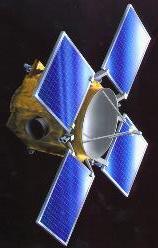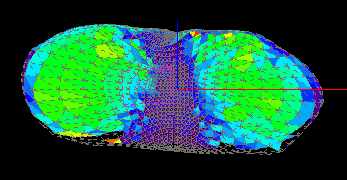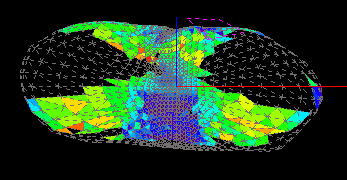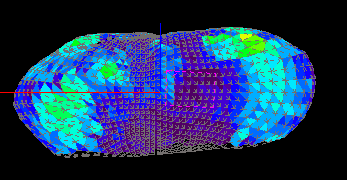
Progress Report: 02Aug99
Task:
Processes:
Because of the way in which this data is processed, it's necessary that each set of pictures have at least 50% overlap with the set of pictures taken before and after it (that is, 50% of the region in the first picture set should show up in the second picture set).
It's better to take color data from lattitude scans (for an explanation, see lattitude scans versus longitude scans ) for two reasons. The first is that, since the 7 pictures are not taken at the same instant but are taken one after the other, the 7 pictures within the set have more overlap with each other when the camera is moving as little as possible. The second is that, due to the large size and low compression rates for the data taken through the filters, we can only send back 89 sets of pictures a day. Thus, it makes little sense to scan up and down because we would gather too much data that way.
The restriction imposed by only being able to 89 pictures a day go further than preventing us from using longitude scans. If we want 50% overlap for all the pictures we take, we often have to take pictures every 350 seconds. By contrast, 89 pictures taken over 16 hours corresponds to one picture every 700 seconds. So what we do is not take pictures while the camera is pointing at the dark side of the asteroid.
Finally, the large volume of data that we gather means that it is imposible to get monochrome and color coverage at the same time. Thus, we only take color pictures during the time delegated to the NLR group (4 days of the 100km orbit).
Results
| Monochrome | Color |
|---|---|

|

|

|

|
(Emily Peters and Jessica Edmonds, 7-9-99)